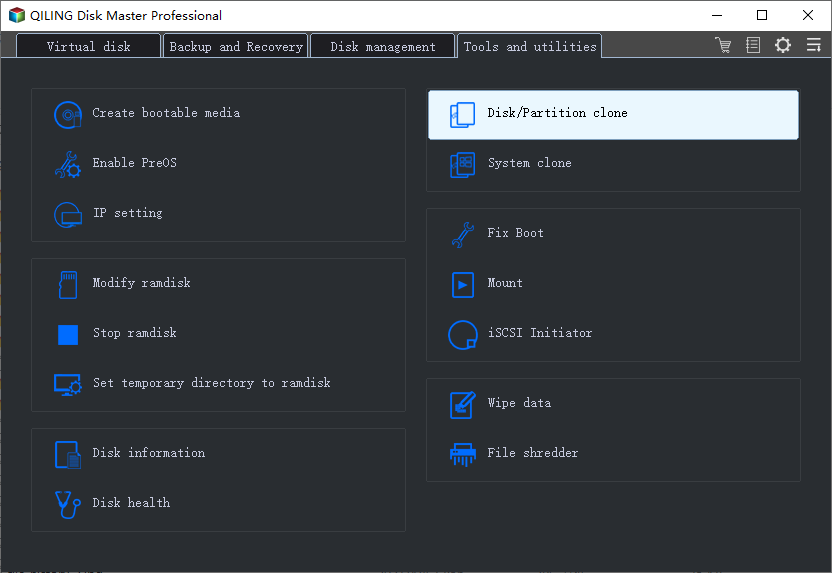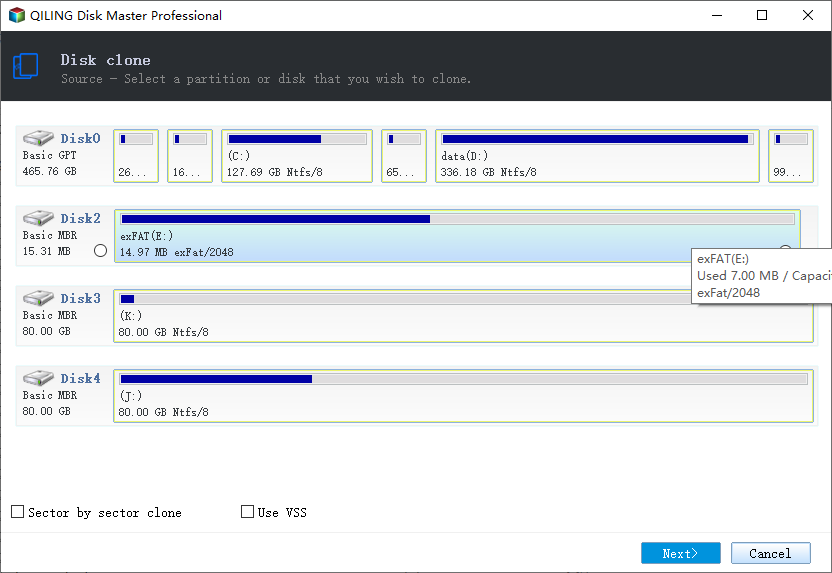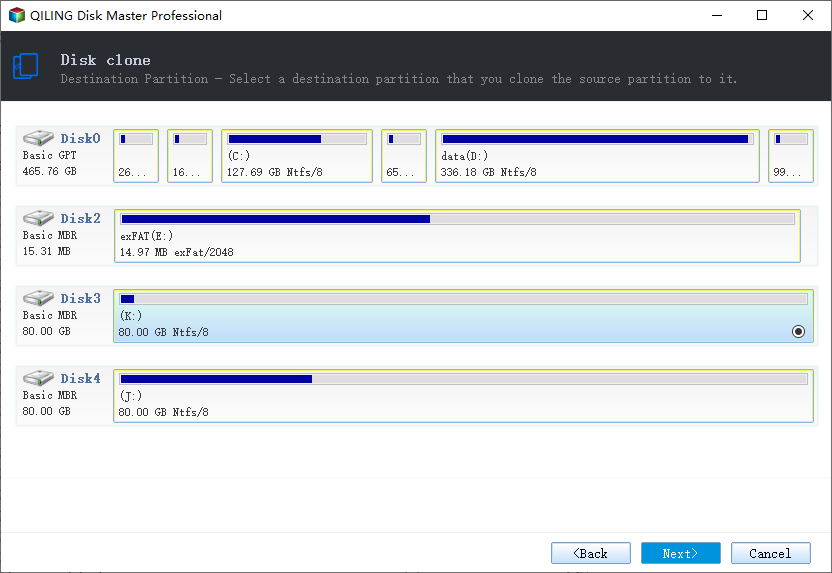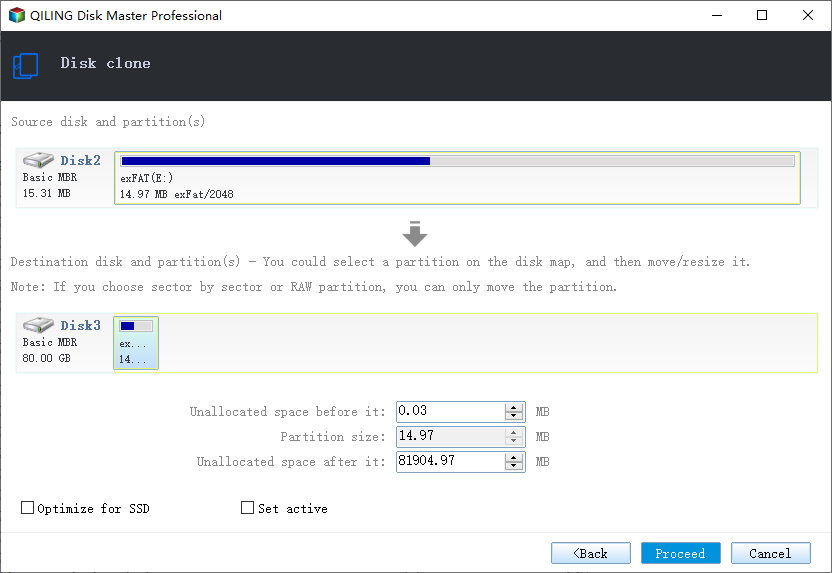Clone Linux HDD to SSD Without Re-installing | Reliable Methods 2021
Is There A Reliable Way to Clone Linux HDD to SSD?
Despite the large number of Linux users, the operating system still lags behind Windows in terms of available applications. For instance, when a Linux user needs to clone their HDD to an SSD, it can be challenging to find compatible or exclusive Linux disk cloning software, unlike the ease of finding such tools for Windows users.
If you want to clone your Linux drive to an SSD, you have two reliable options: using Qiling Disk Copy or the dd Command. These methods can save you time and effort in the process.
| Comparison | Qiling Disk Copy | dd Command |
|---|---|---|
| Suitable users | Average and Professional | Professional |
| Cloning success rate | 100% | Not Sure (Improper use will erase data on the disk.) |
| Free or Paid | Paid | Free |
I'll try to summarize it in one paragraph shortly. Here it goes:
Though not Linux-Qiling Disk Copy is a Linux-compatible tool that simplifies the process of cloning a hard drive, replacing the need for the dd command. It offers an easy, fast, and straightforward way to transfer the contents of one hard drive to another, requiring minimal effort - just a few clicks.
Method 1 for Linux Clone Hard Drive to SSD - Qiling Disk Copy
Qiling Disk Copy is a utility that allows users to clone their hard disk drive (HDD) to a solid-state drive (SSD), enabling them to transfer their operating system, programs, and data to a faster and more efficient storage device. This process, known as HDD to SSD cloning, can be achieved with Qiling Disk Copy, making it a convenient and efficient way to upgrade to an SSD without having to reinstall the operating system and programs.
- Easily copy operating from HDD to SSD without reinstalling.
- To upgrade a Linux hard drive, first, back up all data to an external drive or cloud storage. Then, boot from a live Linux environment, such as a USB drive or CD/DVD.
- Replace a failing hard drive with a new functional one.
- Thanks to the sector-You can copy the entire HDD to SSD using a sector-by-sector function, which will clone the HDD to the SSD, keeping the two drives identical in use. This allows you to have a backup of your HDD on the SSD, and both drives can be used interchangeably.
If you're looking for a reliable way to clone a Linux HDD to an SSD, Qiling Disk Copy is a top choice. This guide will walk you through the step-by-step process of cloning your Linux installation to a new SSD, allowing you to copy all the necessary files and settings to the new drive.
How to Clone HDD to SSD for Linux with Qiling Disk Copy
Converting a Linux clone hard drive to an SSD (Solid-State Drive) is a relatively straightforward process that can be completed in four steps. The first step is to back up all data from the hard drive to a safe location, ensuring that no important files are lost during the conversion.
#1. The source hard drive cleanup (optional)
Connect the source hard drive and target SSD in a desktop or laptop, ensuring they are properly seated and powered on.
#3. Initialize SSD (optional)
#4. Start Linux hard drive cloning with Qiling Disk Copy
To ensure a smooth disk cloning process, it's essential to perform a hard drive cleanup on the old hard drive before cloning. This will reduce the disk space consumption on the new SSD, which will be identical to the old drive after cloning. By removing junk files and large files that are no longer needed, you can keep the cloned drive clean. Next, connect the two drives to a Windows computer using the proper connection method - installing them in the tower case or using a SATA-to-USB cable for desktop computers, or a cable or external hard drive enclosure for laptops. If your SSD is new and not initialized, initialize it before proceeding to ensure it's recognized by your computer.
I'm not sure what you're referring to, could you provide more context or clarify what you mean by "Linux clone hard drive to SSD"?
Step-by-Step Guide
Step 1. To transfer data from your Linux computer to a Windows computer, remove the hard drive from the Linux computer and connect it to the Windows computer where Qiling Disk Copy is installed. Also, connect the target SSD to the Windows computer.
Step 2. Choose "Disk/Partition clone" in the tool page to start.

Step 3. Select the source Linux hard drive that you want to copy or clone, then tick the box in front of Sector by sector clone to clone the Linux EXT hard drive to SSD in Windows with the same disk layout. Click Next to continue.

Step 4. Select the destination SSD where you want to clone/copy the old disk and click Next to continue.
To successfully copy or clone a hard disk, it's essential to ensure that the destination disk is at least the same size or larger than the source disk. This is a crucial consideration to prevent any potential data loss or corruption during the process.

Step 5: Check and edit the disk layout.
If your destination disk is an SSD drive, be sure to select the "Optimize for SSD" option if the target is SSD.

Step 6: Click "Proceed" to start the hard drive cloning process.
A warning message informs you that the data on the destination disk will be deleted. If you don't have any important data on the destination disk, click "OK" to proceed.
Read also:
Method 2 For Linux Clone Hard Drive to SSD - Using dd Command
The 'dd' command in Linux is a utility for Unix and Unix-like operating systems that converts and copies files. It can also be used to work with device drivers for hardware and special device files, treating them like normal files. With a clear understanding of the 'dd' command's concepts, you can easily migrate Linux OS and programs from one drive to another, making the process relatively straightforward.
Steps to clone a Linux hard drive:
# init 0
ok boot
# dd if=/dev/rdsk/c0t0d0s2 of=/dev/rdsk/c0t2d0s2 bs=128k
# fsck /dev/rdsk/c0t2d0s2
# mount /dev/dsk/c0t2d0s2 /mnt
# cd /mnt/etc
# vi vfstab
(Modify entries for the new disk)
# cd /
# umount /mnt
# init 0
# boot disk2 -s
# sys-unconfig
# boot disk2
Clone HDD to SSD Linux? Here it is!
If you need to clone a hard drive on Linux, you have two options. The first method involves using a disk cloning software, which is ideal for beginners due to its easy steps and intuitive interface. Alternatively, you can use the dd command, a more complex but effective method that works for those who are comfortable with the process.
Related Articles
- How to Move Windows Boot Partition to A New Drive
- HDD RAW Copy Tool: Upgrade Disk, Copy Disk, Recover Disk
- Best Bad Sector Repair Solutions to Check and Remove Bad Sectors on Hard Disk
- [Tried and True] Ignore Bad Sectors During Copying
- Clone hard drive with easy and simple steps - Qiling Disk Copy